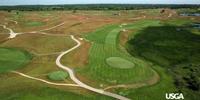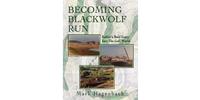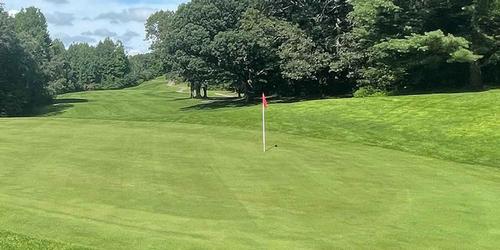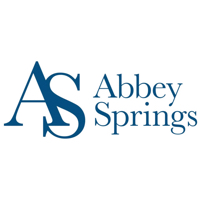The Golf Courses of Lawsonia - Green Lake, WI
Wisconsin's All Day Paradise
By Matt Tevsh
Midwesterners have a bunch of spectacular choices when it comes to golfing from sun up to sun down. There is Blackwolf Run and Whistling Straits in Wisconsin, Harborside International in the shadow of downtown Chicago, Giants Ridge in the northern outpost of Minnesota, and the Birck Boilermaker Complex at Purdue just to name a few that this publication has featured.
All of the above 36-hole facilities come highly acclaimed, some even with the power to attract golfers on a global scale, but at the same time, they all fall short of what one two-course beauty offers in the tiny tourist town of Green Lake, Wisconsin.
The golf courses of Lawsonia (about 90 miles northwest of Milwaukee) provide perhaps the most diverse 36-hole golf experience in the region. With the Links course and the Woodlands course, golfers have the opportunity to play two diametrically opposite layouts for one uncommonly low price. Asked whether there is another 36-hole facility in the Midwest that can combine diversity and value any better, Lawsonia Director of Golf Jeff Kleinke said with a chuckle, "Why would I want to answer that one? I'm not sure about the Midwest... but to have two courses that are like this? You can't find that anywhere in (Wisconsin) I don't think."
The Morning 18: The Links Course
Playing the Links in the morning can be a mystical experience, almost Golf in the Kingdom-like with a touch of fog or mist in the air. There is good reason for that. The entire feel for the course was originally inspired by Scottish golf courses. "You just don't find many courses built with the steep bunkers, the grass bunkers, and the undulating greens," said Kleinke. "All the greens are elevated. It's a layout that's not very long, but still tough. It's kind of withstood the test of time."
The Links was built in the late 1920's by architect William Langford, who later became the first honorary member of the Golf Course Architectural Society of America. Langford, who was born in Austin, Illinois, borrowed ideas from a visit he took to Scotland with Theodore Moreau to create the Links course vision, which remains much intact today. The experience starts right away on the first tee box where it is difficult to tell where the teeing ground ends and where the fairway begins. The two merge together to create a runway effect for the dog-leg right hole. Further down the fairway is a giant, rectangular bunker which is set perpendicular to the fairway. And the first green features a steep drop off to the left and back setting the tone for what is sure to be a challenging day for any golfer's short game.
Kleinke said that when people play the Links, the hole they most talk about is the par-3 seventh which measures just 161 yards from the back tees. So rare is the hole that it gives the impression of a slightly downhill tee shot to an elevated green. The elevation effect is created by the legend of the boxcar, which is said to be buried under the green. Anyone who misses the green short or right will face a recovery shot up and over about a 20-foot steep bank.
Other unique features to the Links includes a blind tee shot on the par-four second, a 239-yard par-3 (the 10th) that can play like a par four, and numerous uphill shots, whether off the tee or on approach shots. Add in large, dramatic breaking greens and the adventure gets even better closer to the hole. The stretch of holes from 13 to 15 is different from any other stretch on the course. Trees come into play, particularly on the approach shot to the spectacular 568-yard 13th and also on the 154-yard 14th, which feels much more like the Woodlands course that the Links. The 394-yard 15th features a pond off the tee, the only water feature on the inland design.
The Links returned to its roots about 10 years ago when Langford restoration specialist Ron Forse was consulted for a removal effort of what was documented to be 150 trees. Kleinke said that sometime during the 1970's the management at Lawsonia began planting a number of trees on the course thereby changing the feel of it. The additions took more of the wind element out of play, which was really meant to be a staple of the Links. "We started losing our rankings actually," said Kleinke. "When we removed the trees, our rankings came back to where they should have been. The tree-lined fairways and the links-type design just didn't gel well."
Additional tee boxes to the 18th, 11th, and ninth holes during the technological golf era has given the Links added bite. The view from the back tee boxes on nine is one of the best on the course, almost Shinnecock Hills in grandeur and strategy. The Links can play up to 6,853 yards (par 72) and down to 5,078 yards (par 71). But with four par-4's of at least 418 yards, two par threes over 200 yards, and the three-shot par five 15th, the total length can be deceiving. Plus, the routing consists of an unusual compilation of eight par fours, five par fives, and five par threes. Holes 9-14 go 5-3-5-3-5-3.
The Links has continued to receive high rankings by major golf publications for courses built prior to 1960. In addition to having a little-known "Hall of Fame" architect on its design, its history includes visits by four of golf's all-time legends - Walter Hagen, Ben Hogan, Byron Nelson, and Sam Snead. The latter three were said to have played in the Little Lawsonia Open in the 1930's.
The Afternoon 18: The Woodlands Course
Any golfer teeing off for a round on the Woodlands, after playing the Links, might feel as though he or she has been transported to a different property. But even with all the accolades the Links has received, its partner course rarely takes a back seat. "The Woodlands tends to be more popular," said Kleinke. "Our guests like to come up here and play in the woods and get that sort of Northern Wisconsin experience. It has a whole different feel. It runs by Green Lake. It has elevation changes. It's a totally different type of architectural design. The bunkers are all green level, so if you get into them, you have all different kinds of options. You can actually putt out of them if you want to."
A good example of what Kleinke talks about is at the par-3 16th, an exacting 189-yard downhill tee shot to a long narrow green flanked by a pond on the left and a large bunker on the right. Much of the bunker lies at the level of the green, and with no lip leading to the green, a putter can often be an easier play than a sand wedge. Hole No. 16 lies in the middle of a great variety of holes from 14 to 18. Here is a brief description of the others:
No. 14, 438 yards - The lie, in the fairway or in the rough, can mean everything on this topsy-turvy fairway. Even well hit tee shots will be stuck with a difficult approach over a deep, wide fairway valley leading to a slick green. Par requires four well-played shots.
No. 15, 418 yards - A sharp, uphill dogleg right that can be shortened by cutting the corner. The approach shot is played to one of the deepest greens on the course.
No. 17, 376 yards - Those at Lawsonia like to say this hole has an Augusta-like feel with its tower trees and distinctive fairway and greenside bunkering. While the tee shot is not overly demanding with ample room to miss right, the approach is played to a green well guarded by four bunkers. Certain hole locations might require a chip shot on the green to shoot directly at the hole.
No. 18, 524 yards - Certainly reachable in two for some, the challenge on this hole comes from the green's location. The hole plays predominately straight until about 150 yards in when the green finally appears in a nook to the right. It's a sharp turn framed by trees on both sides, a hillside on the right, and six bunkers. The green is narrow and two tiered. A putt above the hole is almost impossible to stop.
While the Woodlands successfully carries its "Northern Wisconsin" theme throughout 18 holes, the par-3 and par-5 holes are the trickiest. Hole No. 3 is the signature hole of the Woodlands, a narrow 168-yarder with a tee perched some 70-80 feet above green in the woods. And at least two of the par-5's (the 527-yard seventh and the 495-yard 11th) might not require a driver. Though shortish par fives, landing areas are pinched in by water hazards on those holes.
Kleinke offers this simple, but true advice about the Woodlands' par fives: "Hit 'em straight. It's target golf like the rest of the course. That's how the course was built."
At least 15 of the holes on the Woodlands can be deemed tree lined. Oaks, maples, pines, elms, and walnuts provide the setting as does the various wildlife including whitetail deer, hawks, eagles, and turkeys. Green Lake is visible through the trees on a ride from No. 2 to No. 3, on the approach to No. 5, and as a backdrop to the sixth tee. A couple of years ago, holes No. 5 and 6 were re-worked because lakefront acreage was sold.
The Woodlands course, built in the early 1980's by architect Rocky Roquemore, has remained true to its design. Though it measures just 6,623 yards from the back tees, it plays tougher for most amateurs than the Links course as indicated by the slope measurement being higher from three of the four tee markers (including the back tees - 132 to 130).
The ultimate "weekend guy trip"
Lawsonia has long been a popular vacation spot for not only residents of Wisconsin but also from Illinois. Kleinke estimates that 55-60% of Lawsonia's play in the summer comes from visitors south of the border, continuing a long relationship. "Most of our groups have been guys that have been coming here for 30 years," said Kleinke. "Usually they are weekend guy trips... We found in the past couple of years that our 36-hole play has been a big part of our income. Guys come here to play 36 holes."
Unlike many other courses, Lawsonia allows golfers to book two tee times for the same day in advance. There is no need to wait for same day availability. And there is significant savings to do so. The summer 36-hole rate (including cart) is just $105 on the weekday (Monday-Thursday) and $145 on the weekend. Single round rates (including cart) are $79 on the weekday and $90 on the weekend.
Lawsonia is located about 250 miles southeast of Minneapolis, 180 miles northwest of Chicago and 165 miles northeast of Dubuque. For more information, go to www.lawsonia.com or call 1-800-529-4453.
Article Tags: The Golf Courses of Lawsonia
Revised: 12/13/2010 - Article Viewed 37,412 Times
About: Matt Tevsh
![]() Matt Tevsh has been a freelance sports journalist since 1996. He has been published in multiple periodicals including Midwest Golfing Magazine and on various websites including GolfTrips.com. He is an avid golfer and a former member of the Golf Writers Association of America.
Matt Tevsh has been a freelance sports journalist since 1996. He has been published in multiple periodicals including Midwest Golfing Magazine and on various websites including GolfTrips.com. He is an avid golfer and a former member of the Golf Writers Association of America.















